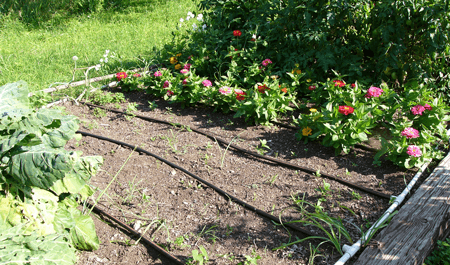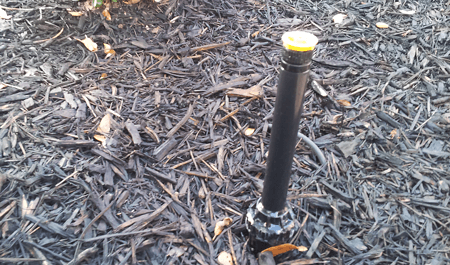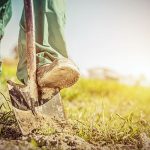When installed properly, kept in good repair and scheduled correctly, drip irrigation can be a tool to reduce outdoor water use. Consider these potential problems before deciding on drip.
Does drip irrigation save water? The answer is more complicated than you might think.
The benefit of drip is that it applies water slowly, ideally below a layer of mulch, directly to the soil so that all the water applied soaks in and evaporation is kept to a minimum. When it’s installed properly, kept in good repair and scheduled correctly, drip irrigation can reduce water use when compared to spray irrigation.

On the flip side a careless installation can saddle you with a wasteful, ineffective system that’ll cost you more money for its lifetime!
SAWS offers an Irrigation Design Rebate to retrofit existing spray zones to drip in flower beds. But before retrofitting your old system or if you’ve inherited drip irrigation, there are some potential problems to consider before committing to drip.
It’s up to you — the consumer — to pay attention to what your irrigator is doing during the initial installation or conversion. This step dictates how much water the zone will use per minute. The power of drip is that a water-wise irrigator can direct the water exactly where it’s needed in the flower bed, potentially saving water.
An important feature often left off of drip zones is an indicator head. This device lets you know when the zone is running and is an important tool for trouble shooting.

After drip is installed it requires maintenance, like any other part of your system. Drip zones should be flushed periodically to keep lines clean and functioning and the lines must be checked for leaks.
While most homeowners know to look out for broken heads, drip problems won’t be as obvious. Tubing can spring leaks or become detached, but since it should be installed beneath a layer of mulch it’s hard to tell. Make a point to run your drip zone while you walk the bed; a slight hissing noise under the mulch after the line has pressurized might be your only indication of a problem. It’s not uncommon for me to find breaks in drip tubing that increase water use by a factor of ten! Couple that with the fact that a broken drip line dumps all the water in one location instead of spreading it evenly across the zone. That amounts to a lot of wasted water.
Even if your system was designed correctly and you keep it in pristine condition, the most important part of saving water is programming.
Here’s an anecdote from a homeowner who successfully completed a SAWS Irrigation Design Rebate:
At the initial consultation he had four spray zones running once a week for 70 minutes, using about 8 gallons per minute (2,408 gallons a month). After completing his retrofit he had two drip zones running three days a week, using about 3 gallons per minute. Good right? Wrong. Because the run schedule increased, the two zones were running a total of 360 minutes, about 4,644 gallons monthly — almost double the water he was using prior to changing his sprays to drip! I suggested he run the system only 80 minutes a week, plenty of extra water for his established plants.
Drip irrigation can be a tool to reduce outdoor water use, but often the hurdles are too high for the average homeowner to realize its full potential. Instead of spending the effort reworking your system why not rework your landscape?
While irrigation will only lose efficiency as it ages, a drought tolerant landscape will only become more established and drought resistant over time. Investing in drought tolerant plants will save you water and headaches in the long run.
Drip irrigation is an expensive solution to a problem Mother Nature solved a long time ago. Choose the right plants and weekly watering during the summer will be a thing of the past.




